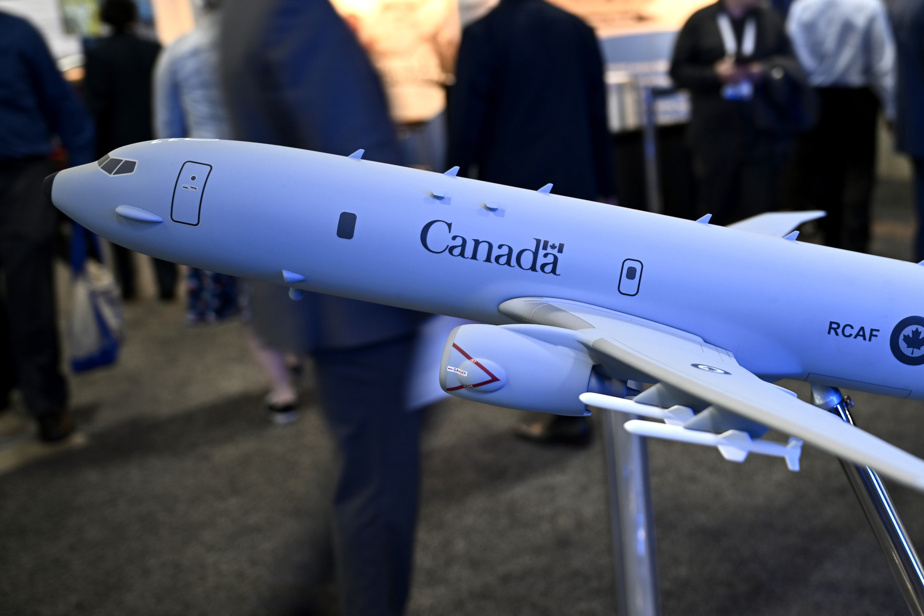A research and development center in the Montreal region, a contract expansion at L3Harris in Mirabel and new simulators for CAE… Boeing puts a few cards on the table to show how it will generate economic benefits in the country after being selected to replace the aging Aurora CP-140s of the Royal Canadian Air Force (RCAF).
“There are already great opportunities for us,” emphasizes Robert Foster, vice-president of L3Harris Canada, which has some 1,200 employees in Mirabel. We got an increase in volume [de travail] for Chinook maintenance [un hélicoptère militaire construit par Boeing]. »
Immediately, this will allow the company to add around 20 employees to its workforce. It will probably be able to hire around 30 more in the medium term due to the additional maintenance work that will be carried out by L3Harris on the Chinook.
This is one of 16 examples offered by the American multinational, which will generate, in Canada, economic benefits equivalent to the portion of the contract surrounding the construction of the Poseidon. Monitoring of commitments must in principle be carried out by federal civil servants.
Examples of expected benefits in Quebec
- Development center in the Montreal region
- Development of an air taxi in the Wisk engineering center (owned by Boeing) in Montreal
- Expansion of business relations with L3Harris in Mirabel
- Collaboration with Héroux-Devtek
- CAE Training Services Export Contracts
- Partnerships with McGill University
“We are ready to move forward from 2024 with the investments indicated in the list,” said Jeff Hurst, director of international partnerships for Boeing in Canada, in an interview. We’ve already made the plan. He can move forward as soon as the contract is signed. »
However, several details remain to be finalized. For example, it was not possible, on Thursday, to have an idea of the footprint of the center that should see the light of day in Montreal as well as the number of people who will work there.
Political file
As The Press revealed, the Trudeau government confirmed on Thursday that it would purchase up to 16 copies of Boeing’s Poseidon P-8A – 14 firm orders and 2 options – built in the United States. The agreement is valued at 10.4 billion, including 5.4 billion for the acquisition of aircraft. There was no call for tenders despite repeated calls from Bombardier and its partner, the Canadian branch of General Dynamics.
This issue took a political turn due to the mobilization of several players in the Canadian aerospace industry. Supported by Quebec and Ontario, the two companies asked for the chance to compete with Boeing.
Bombardier wanted to offer a militarized version of its Global 6500 private jet, which is assembled in the Toronto area. Unlike Boeing’s Poseidon, the plane proposed by the Quebec multinational is only a prototype at present. This visibly worked against the company, which is banking heavily on the defense sector as part of its recovery.
“There is currently a device available, in service and in production [le Poseidon] and on the other side, you have a concept,” said the federal Minister of Innovation, Science and Industry, François-Philippe Champagne, at a press conference, referring to Bombardier’s option.
In disagreement with the Trudeau government, the Quebec aircraft manufacturer believes instead that its solution “would have been a turning point for the Canadian economy”. In a statement on Thursday, the Quebec multinational affirmed that Ottawa could have relied on a local platform intended to become “a model” for other countries which will at some point have to replace their fleets of surveillance devices.
Future
As part of the conditions it must meet, Boeing will also have to integrate Canadian suppliers into its supply chain, and therefore on other programs. These agreements have not yet been concluded. Based in Longueuil, Héroux-Devtek, which generates nearly 20% of its annual revenues from the American giant, considers this to be good news.
“The benefits will not only be on the P8,” underlines its president and CEO, Martin Brassard. We are not looking at the 14 planes that will be purchased by Canada, but at the company’s other programs. It’s a big client of work. »
Specializing in pilot training and the construction of flight simulators, CAE has already obtained assurance that it should deliver simulators to the RCAF in addition to training its pilots when the P-8As are delivered. It remains to be seen how many simulators will be built.
“Canada must decide where its training centers will be located,” explains France Hébert, vice-president, defense and security, Canada, at CAE. We also have other agreements with Boeing for other business opportunities. It will depend on what our client wants going forward. »
In service since 1980 in Canada, the CP-140 Auroras were initially scheduled to be retired from 2030. Several hundred million were put on the table to extend the life of the fleet, but this schedule has visibly changed. The first P-8A is expected to be delivered in 2026 and the RCAF should have received all the aircraft the following year.
Boeing’s P-8A
Crew: up to eight people
Payload: five anti-submarine torpedoes and four anti-ship missiles
Rangeable distance: 7,240 kilometers
Operators: nine countries, including the United States, United Kingdom and Australia
Learn more
-
- 163
- Number of Poseidon P-8As delivered by Boeing to date
BOEING
